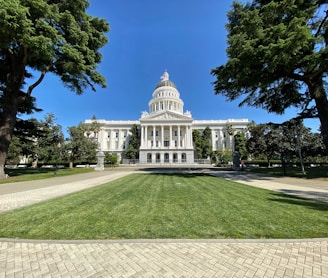In 1994 California Recognized the Gabrielinos as the Aboriginal Tribe of the Los Angeles Basin
FEDERAL RECOGNITION


In the vast landscape of California's history, the Gabrielino Tongva Indian Tribe holds a unique and significant place. They were among the most prosperous and influential Native American tribes in southern California long before European contact. The rich cultural heritage of the Gabrielinos encompasses the entire Los Angeles Basin area and extends to the Channel Islands. In 1994, the State of California took a significant step by passing Assembly Joint Resolution No. 96 (AJR 96), recognizing the Gabrielinos as the aboriginal tribe of the Los Angeles Basin. In this blog post, we will explore the importance of AJR 96 and the historical significance it holds for the Gabrielino community.
Background and Historical Context
Before delving into the significance of AJR 96, it is essential to understand the historical context of the Gabrielinos. The tribe had a well-established society with a structured government, laws, religion, music, dance, art, and even a monetary system long before the arrival of Europeans. They thrived in the Los Angeles Basin and the Channel Islands of Santa Catalina, San Nicholas, and San Clemente.
With the onset of European colonization, the Gabrielinos faced significant challenges, including forced displacement, loss of land, and the devastating impact of diseases brought by the newcomers. However, the Gabrielino Indian community persisted and adapted to these changes, retaining their cultural identity and practices.
The Importance of AJR 96
AJR 96, introduced by multiple Assembly Members in August 1994, played a vital role in recognizing the Gabrielinos' historical and contemporary presence. The resolution officially declared the Gabrielinos as the aboriginal tribe of the Los Angeles Basin, acknowledging their longstanding connection to the region and their continued existence.
By passing AJR 96, the State of California solidified its commitment to recognizing and honoring the Indigenous communities that have shaped the state's history. The resolution highlighted the Gabrielinos' contributions to the development of the region long before California became a state.
Moreover, AJR 96 sought to promote a greater understanding of the Gabrielino culture and heritage among the wider populace. The recognition not only instilled a sense of pride among the Gabrielino community but also raised awareness about the historical and ongoing struggles faced by indigenous peoples in California and beyond.
Implications and Beyond
AJR 96 was not just a symbolic gesture; it also had practical implications. The recognition brought attention to the Gabrielinos' rights to their ancestral lands and their need for preservation and protection. The resolution paved the way for further dialogue and cooperation between the state government and tribal leaders to address issues affecting the Gabrielino community.
Furthermore, by respectfully memorializing the President and Congress of the United States to give similar recognition, AJR 96 urged federal authorities to acknowledge the Gabrielinos' significance at the national level. This could lead to increased support for the tribe's cultural preservation efforts, land reclamation initiatives, and representation in decision-making processes.
Conclusion
Assembly Joint Resolution No. 96 stands as a testament to the enduring legacy of the Gabrielino Tongva Indian Tribe and their invaluable contributions to the Los Angeles Basin and beyond. The resolution's passage was a crucial step in recognizing and preserving the rich cultural heritage of the Gabrielinos, acknowledging their aboriginal connection to the region, and calling for broader recognition at the federal level. As we continue to learn from the past and embrace the diversity of California's history, AJR 96 serves as a reminder of the importance of respecting and supporting the rights and cultural identity of the indigenous peoples who have called this land home for countless generations.
Citation:
“BILL NUMBER: AJR 96 - Assembly Joint Resolution No. 96 Relative to the Gabrielinos.” Official California Legislative Information, 13 Sept. 1994, www.leginfo.ca.gov/pub/93-94/bill/asm/ab_0051-0100/ajr_96_bill_940913_chaptered.